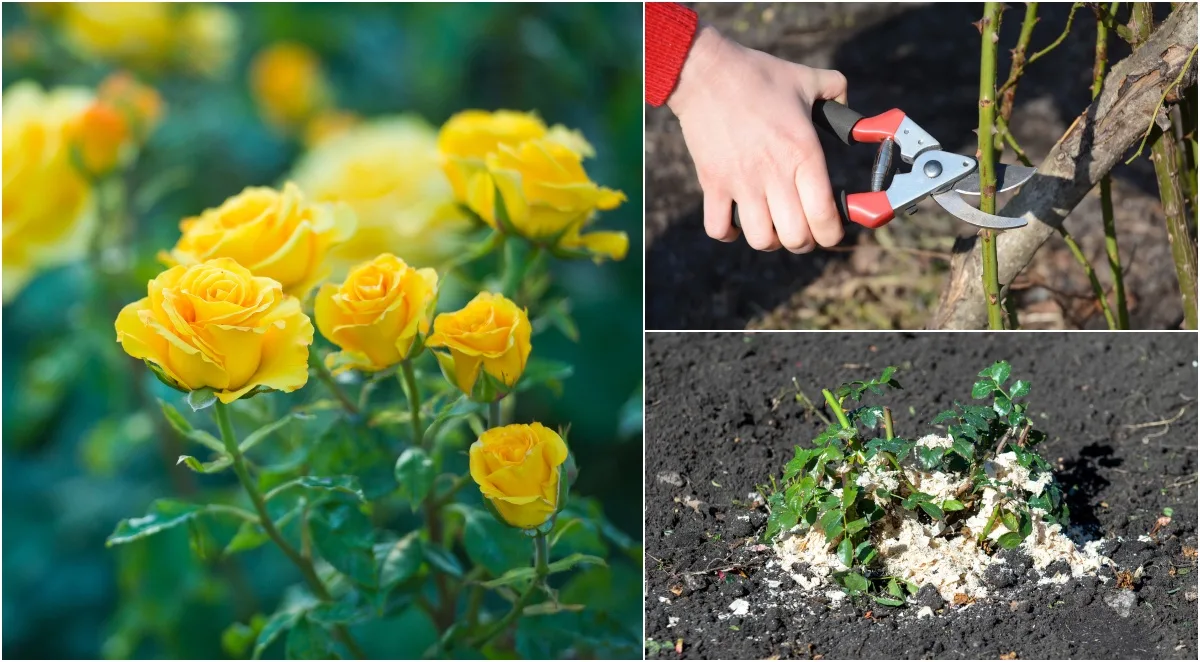
Whether you grow rose shrubs, climbers, ground covers, or miniatures, we all want more blooms from our roses!
We’ll show you the steps to get more blooms from all your favorite roses, from wild species roses to award-winning fragrant hybrid tea roses.
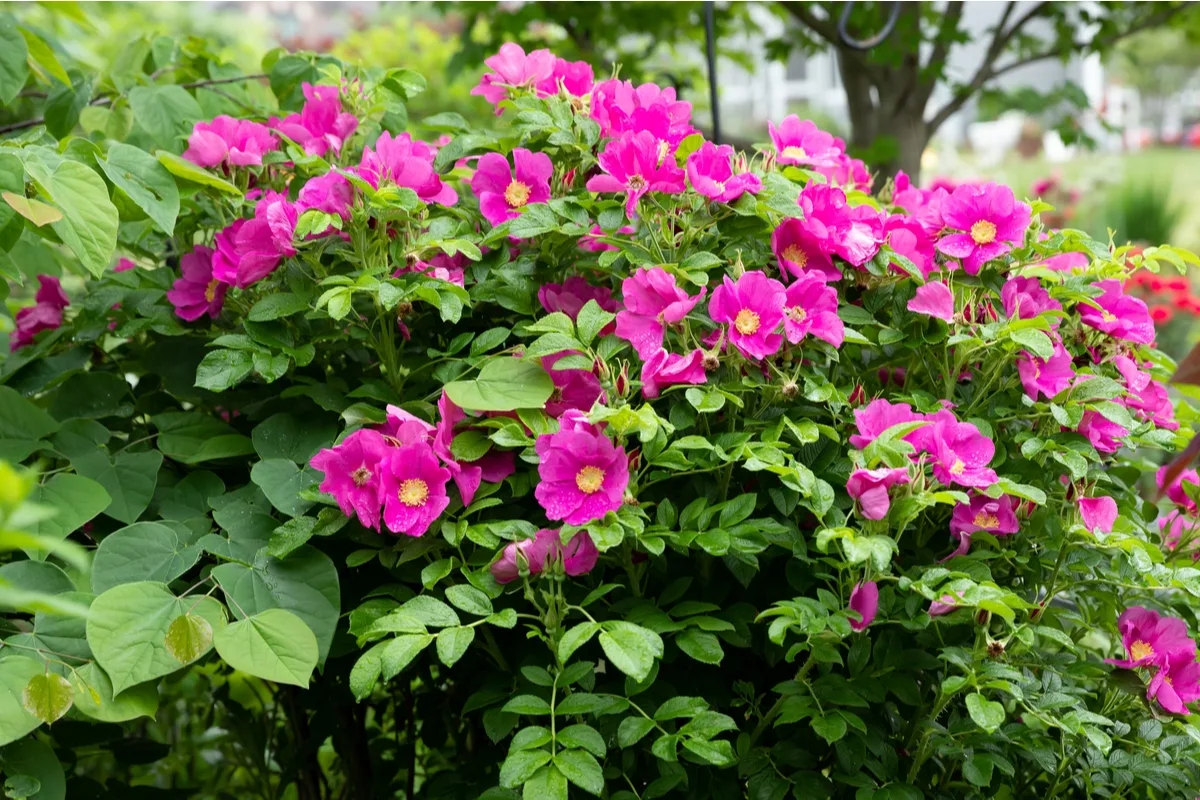
Did you know roses have bumper-crop years, just like apples!
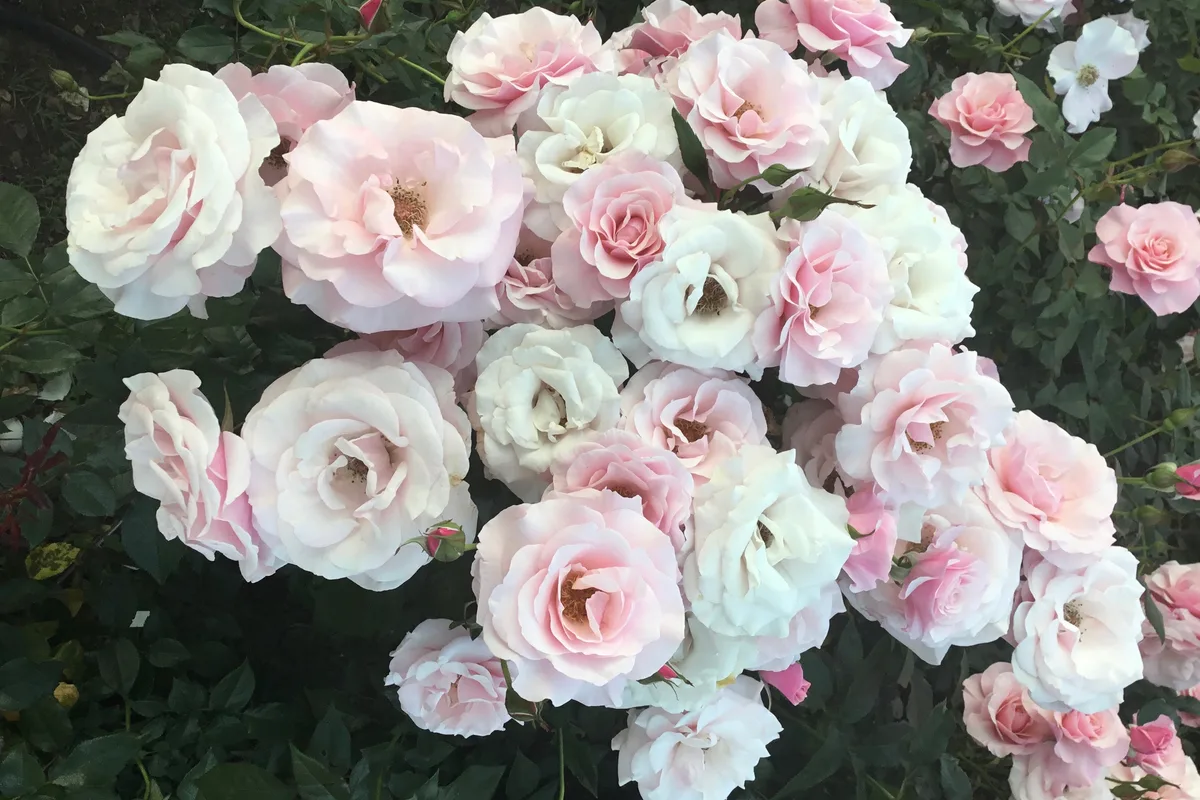
Secret #1: Choose The Right Roses
Hardiness
Know your zone and choose roses even hardier to allow them to thrive even during your worst weather.
Growth Size & Habit
Roses come in all shapes and sizes. Climbing rose varieties can top 20 feet while miniature roses might only be 6 inches tall!
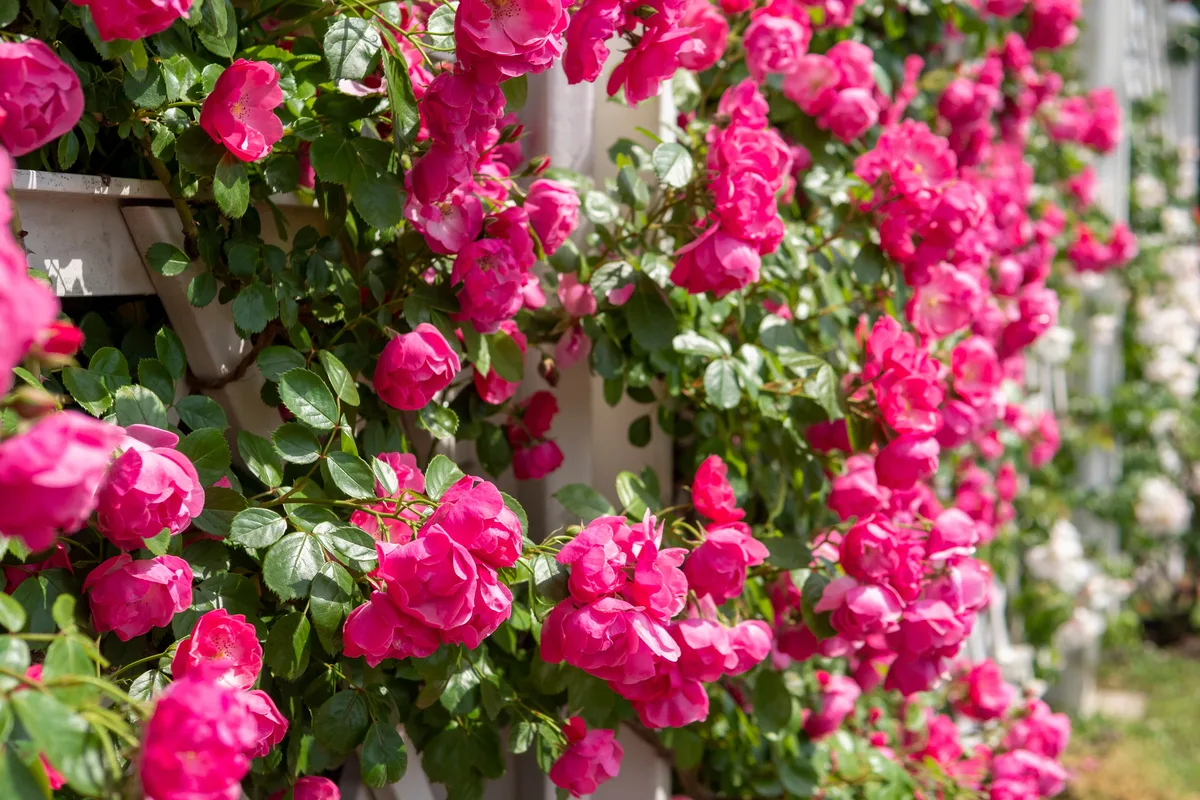
For abundant blooms, choose the rose that will fill the space you have without being overcrowded.
Flower Form
Spoiled for choice, rose blossoms range from flat or cupped to multi-layered rosettes and pom-poms.
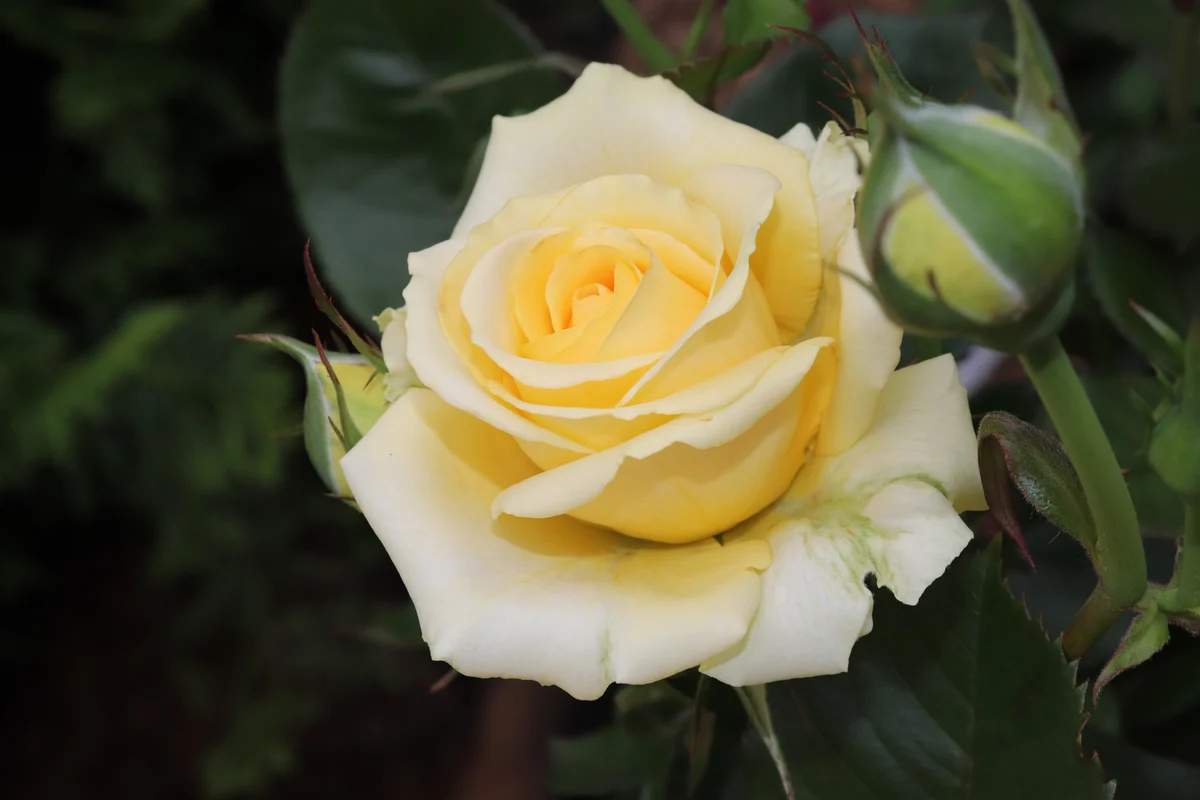
While a revered long-stemmed rose might win Best in Show, masses of 2-inch rosette clusters may provide the flower power you desire.
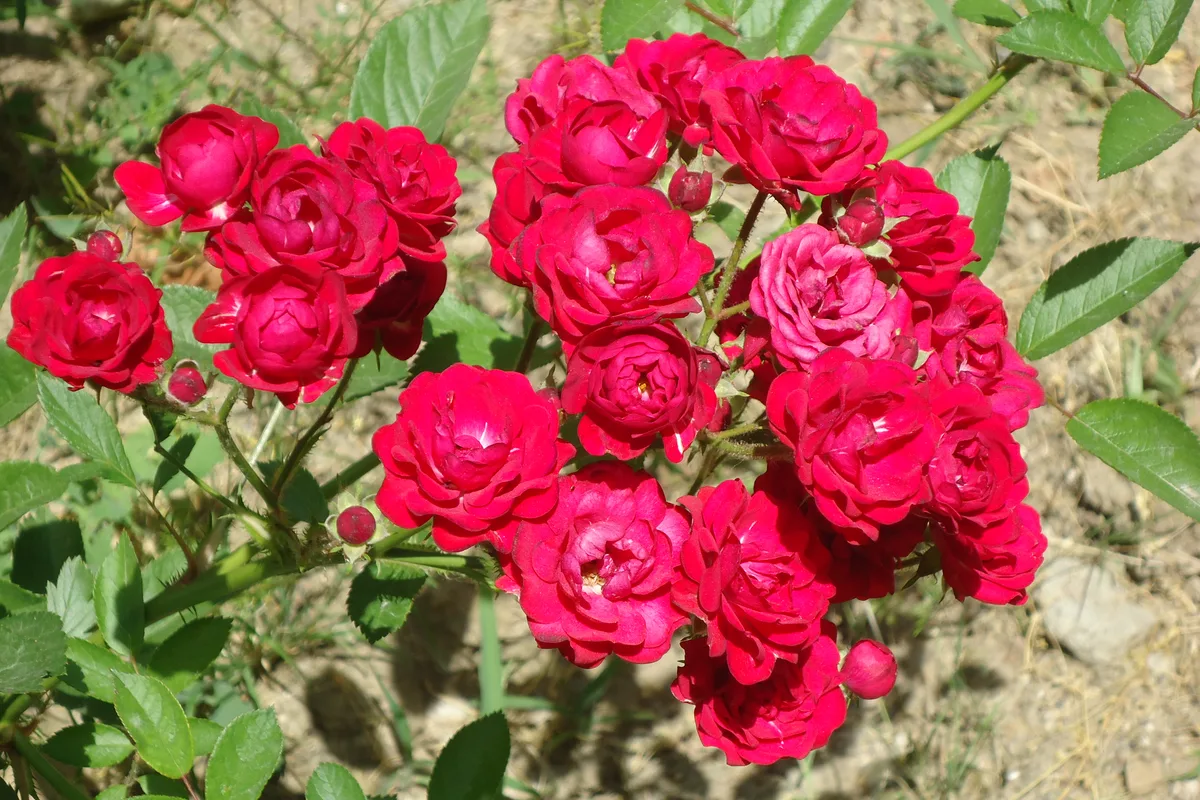
Bloom Time
With thousands of rose varieties, the bloom time has a wide range as well.
Consider the bloom time to make sure you’ll be around to witness your roses’ flower parade.
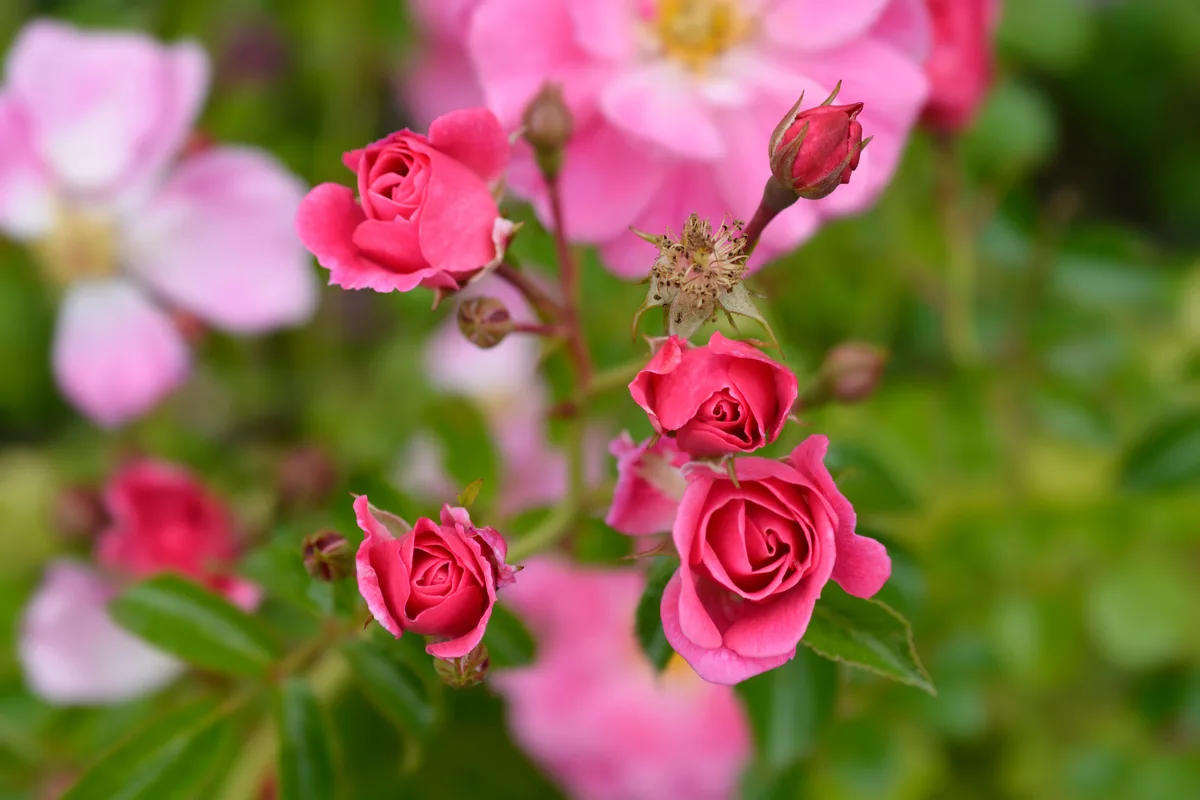
Rebloomers vs One Hit Wonders
Choices abound for reblooming hybrid roses the produce flower after flower spring through to fall.
Hardy Morden roses, available through High Country Roses and the Knock Out Roses® family are great examples of reblooming hybrids.
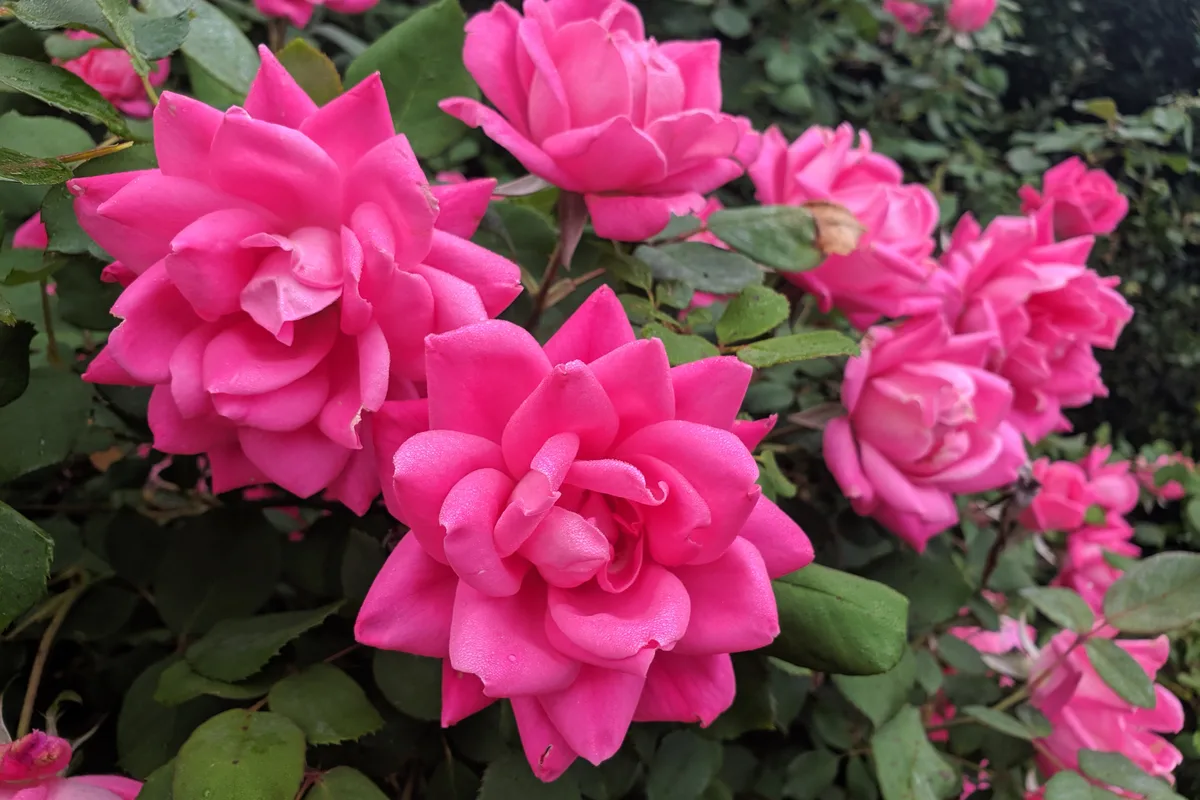
Roses that have one big blooming show – one-hit wonders – bloom in force in spring on second-year growth.
Prized for their hardiness and fragrance, be careful when pruning old-wood-bloomers so you don’t remove next year’s abundant blossoms.
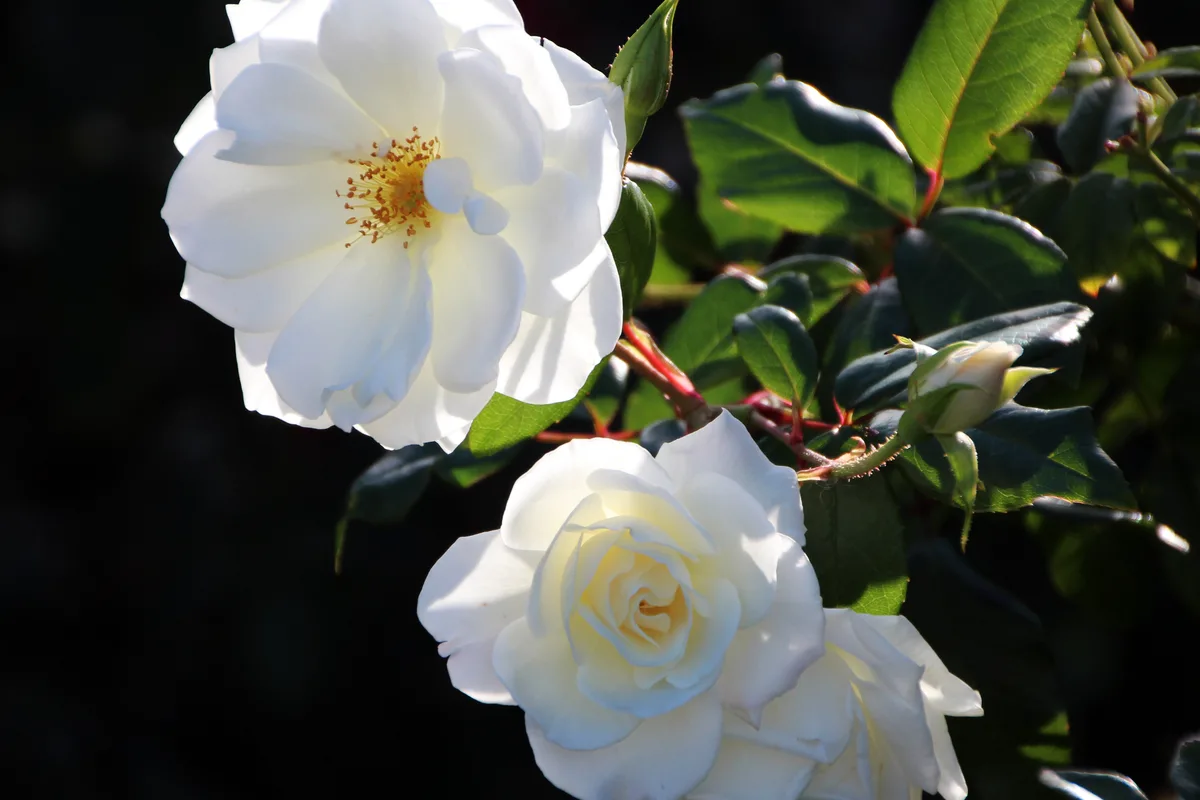
Pest and Disease Resistance
Plagued by aphids or powdery mildew? Choose pest- and disease-resistant rose varieties to increase your roses’ blooming capacity.
Secret #2: Plant Roses Correctly
Location
Roses need the sun to bloom. Bottom line. Plant roses in full sun, more than 6 hours of sun, for prolific flowers.
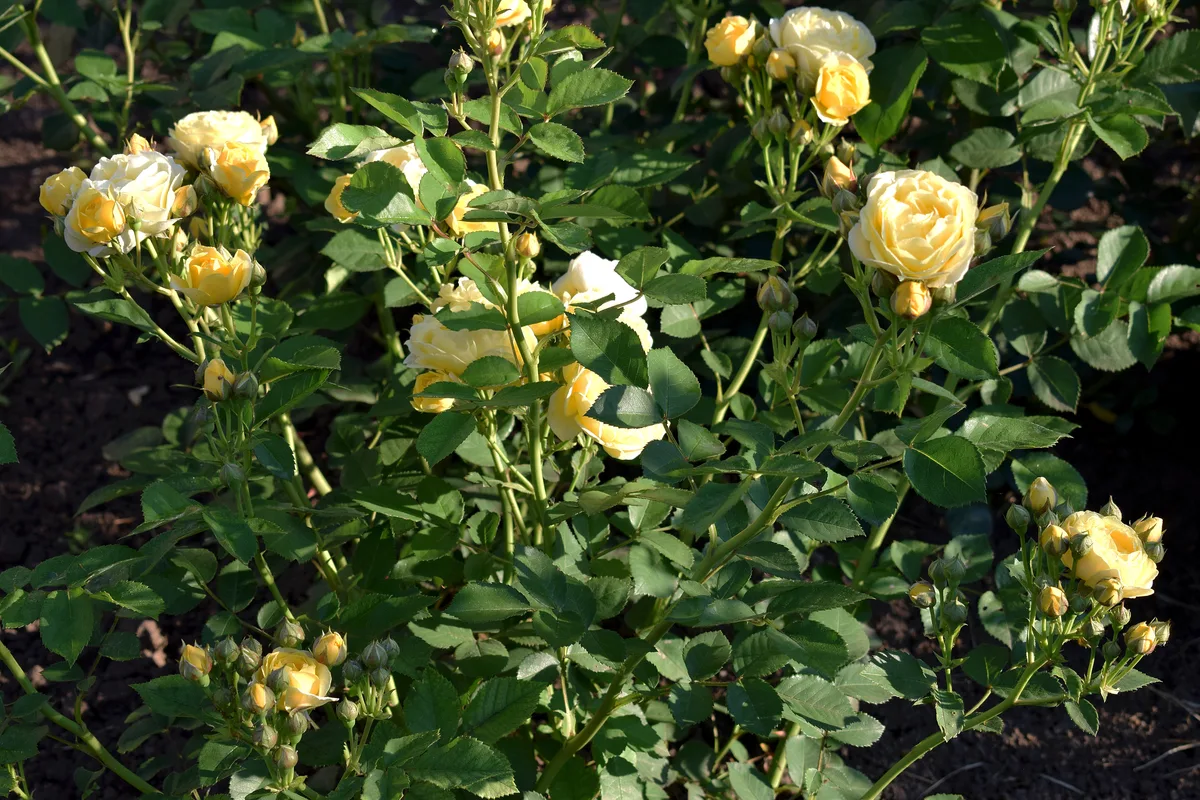
Spacing
Let the sunshine in! Roses with lots of space and access to flower-forming daylight will bloom more than a crowded, sheltered rose.
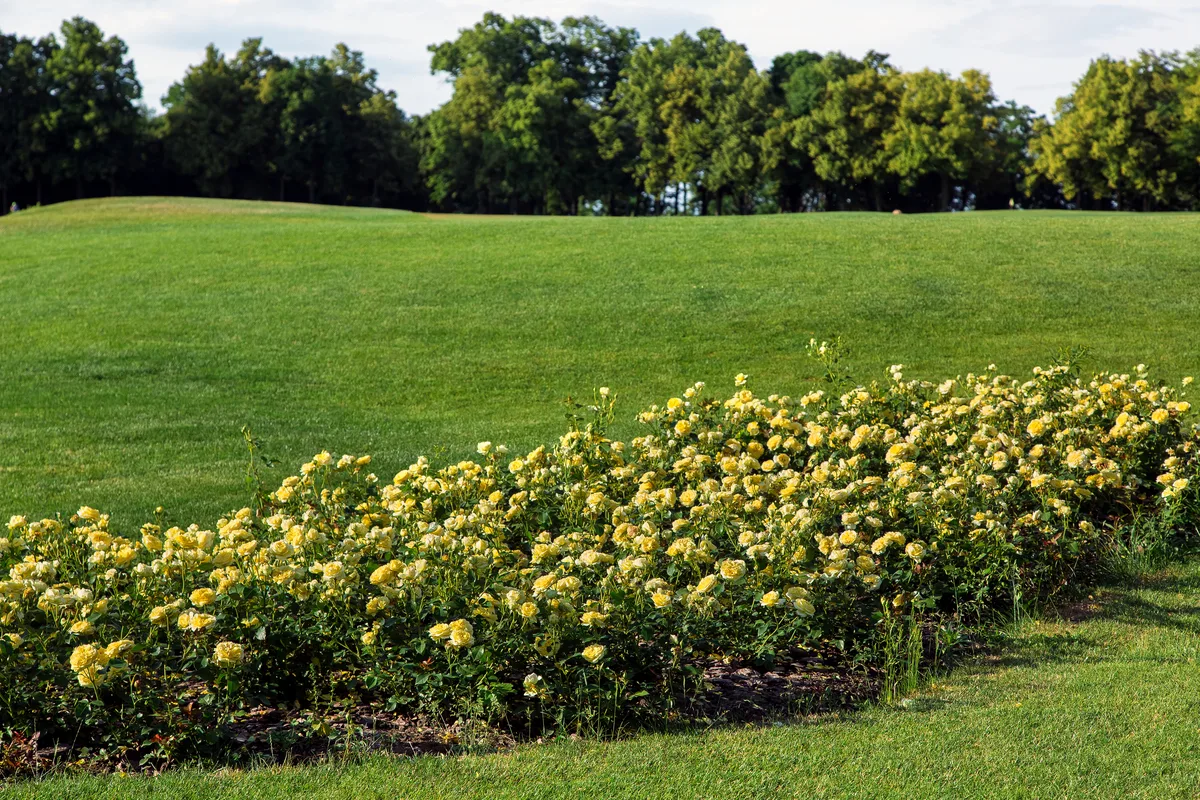
Soil & Amendments
Rich, deep, nutritious soils that retain moisture while being well-draining will keep your rosy aspirations blooming.
Secret #3: Water Schedule for Roses
For newly planted roses, water every second day while they become established.
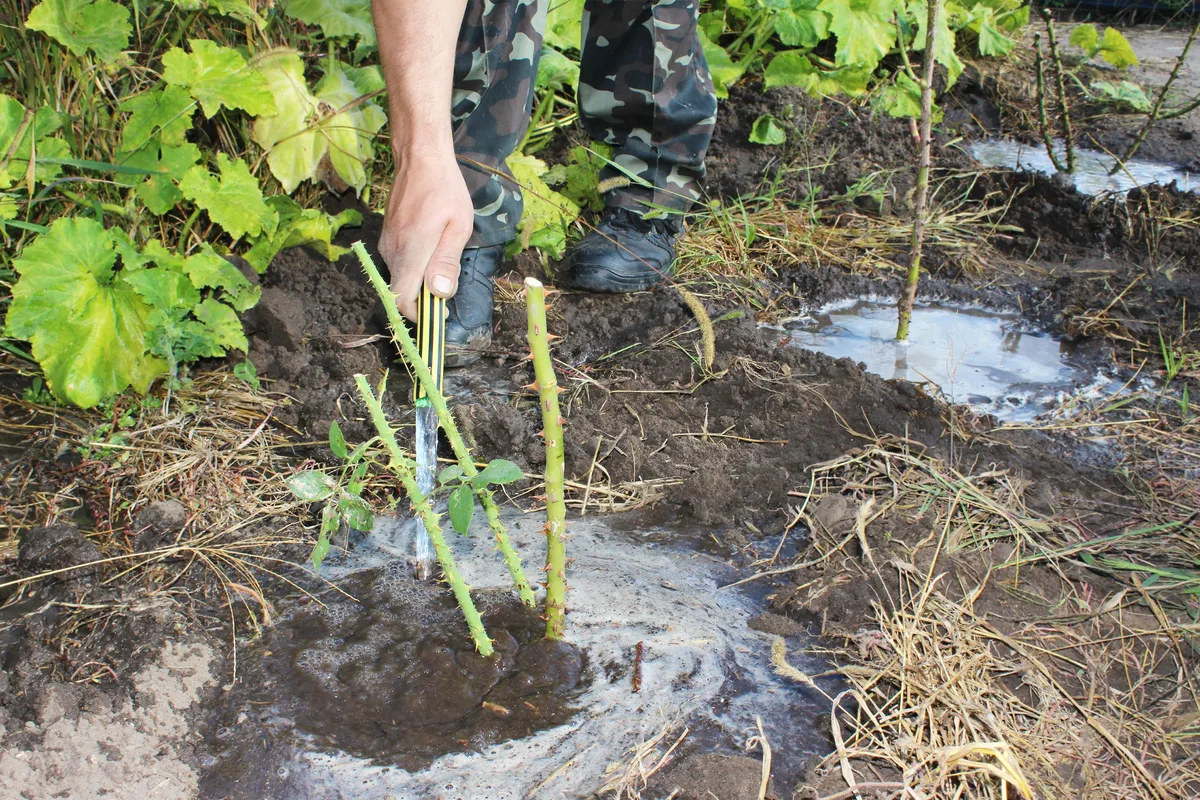
Established roses should be watered deeply once a week, depending on the weather.
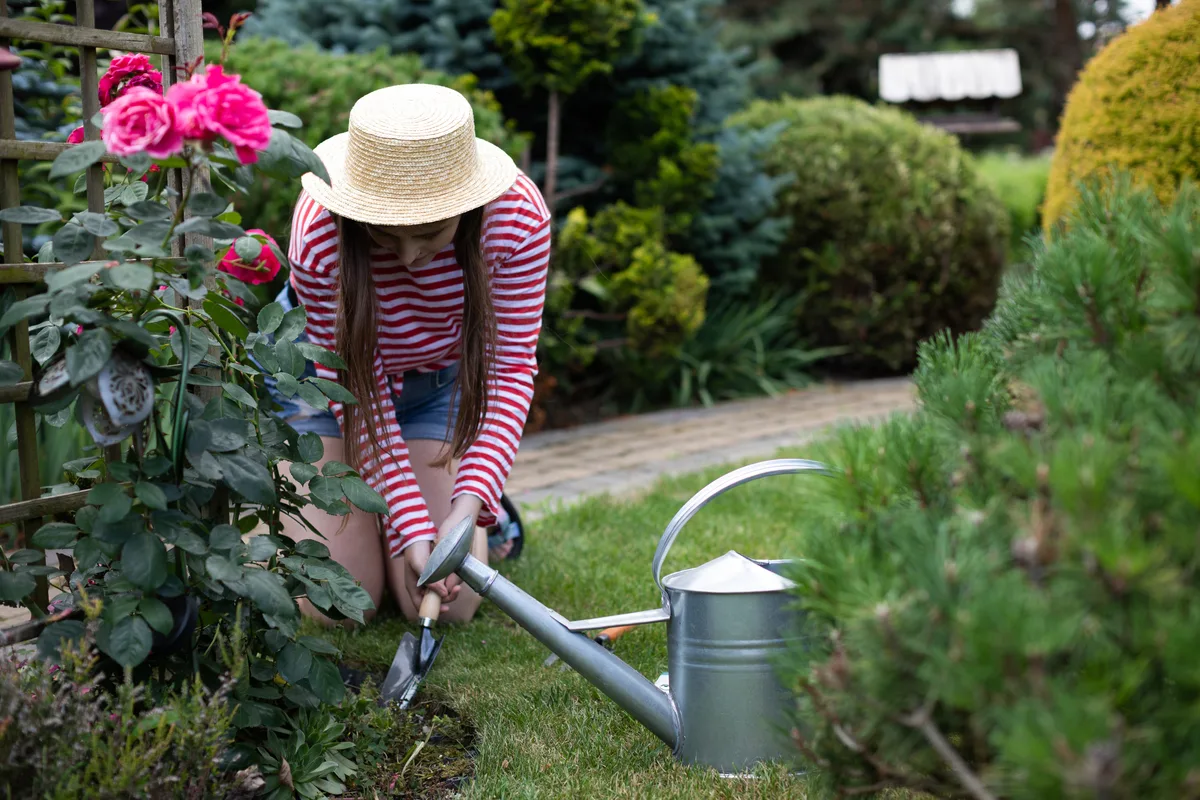
*Super Secret: Allow your roses to dry out slightly to signal the bushes to push more buds.
With a new flush of rosebuds, water well, and water deeply for luscious lavish flowers.
Secret #4: Feeding Roses
Timing is Everything
For glorious blooming roses, provide extra nutrition for your roses in early spring, early June, and late June.
Stop fertilizing at summer’s end to signal your rose bushes to prepare for winter.
If It Ain’t Broke
Happy roses that are well suited to their situation and grow in nutrient-rich organic soils may not need any extra fertilizer.
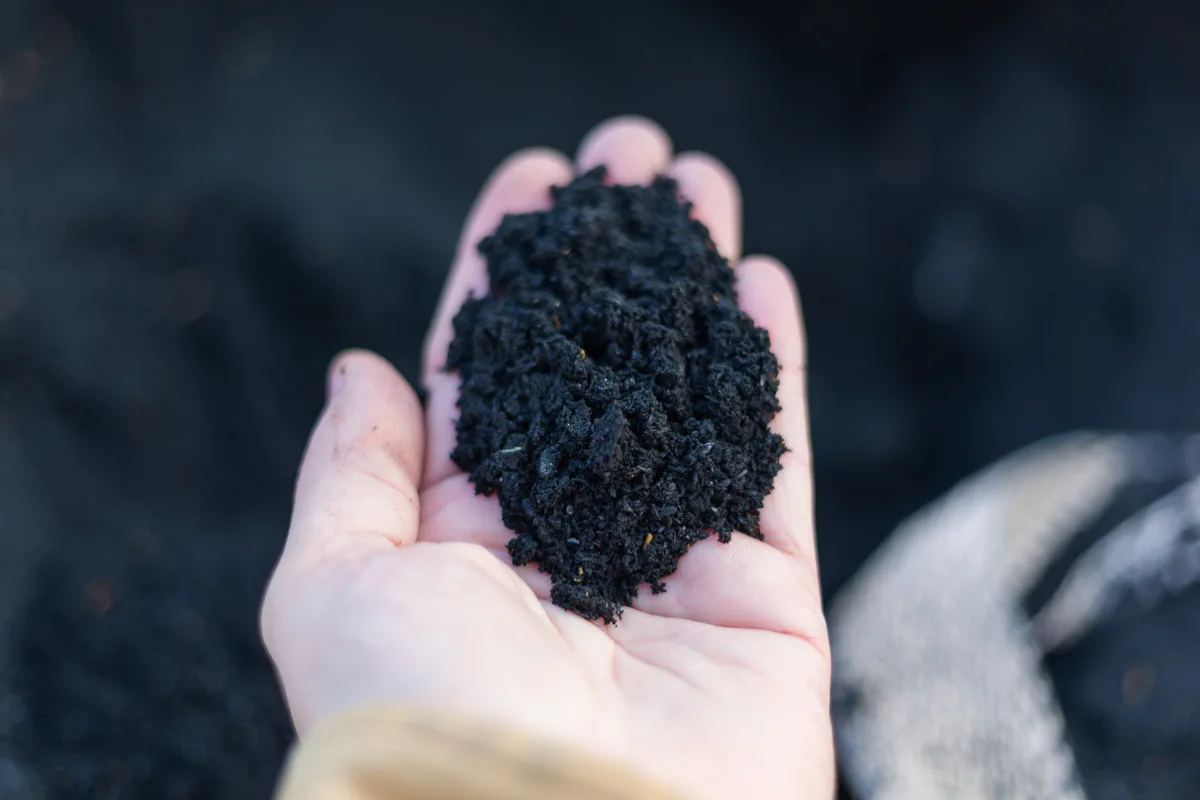
NPK and Roses
N – Nitrogen for succulent vegetative green growth, helping your roses shine vibrantly.
P – Phosphorous for healthy root growth and bud and bloom formation, particularly important to maximize your roses flower power.
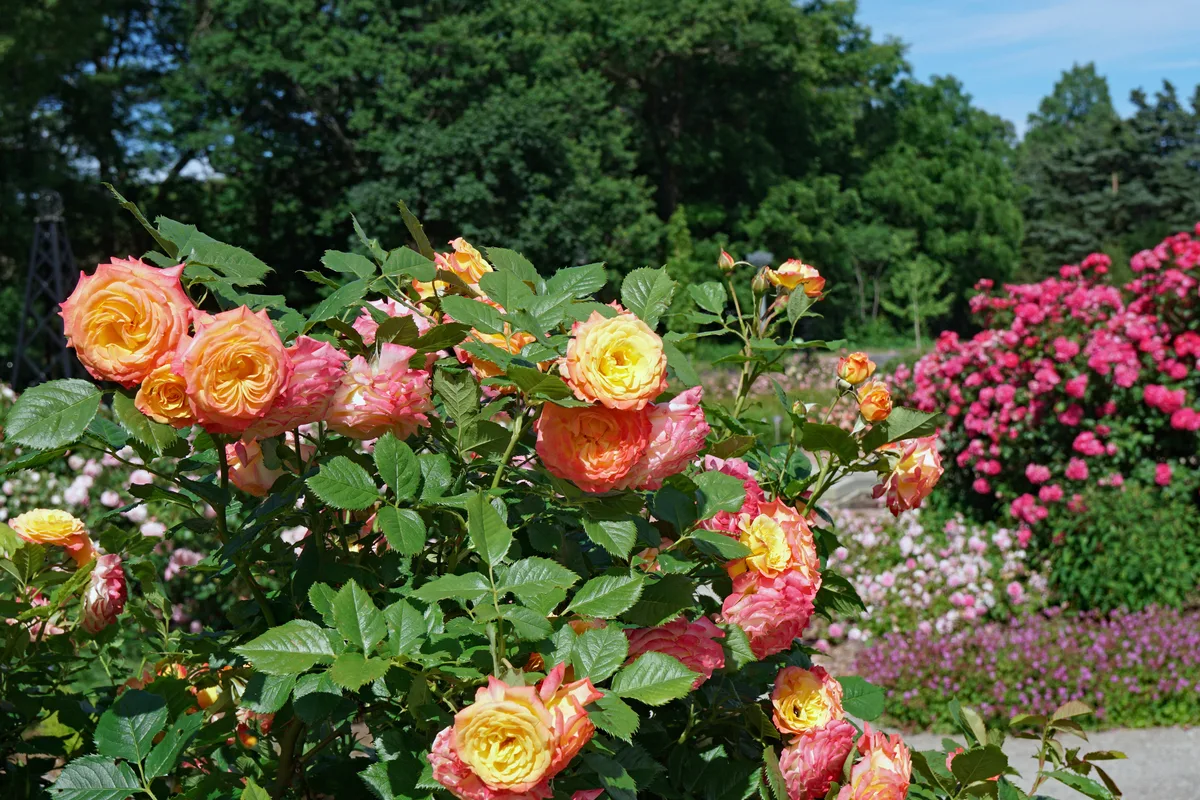
K – Potassium for strong plant tissues to help your rose plants hold up abundant beautiful blossoms.
NPK are the macronutrients necessary for all plant growth. Roses enjoy a healthy dose that is normally available in good-quality soils. Roses also benefit from many micronutrients including calcium and magnesium.
Mulching
Mulching is a wonderful way to provide extra nutrition while retaining moisture.
Mulches made from well-decomposed compost, well-rotted manure, and leaf mulches will provide additional nourishment for prolifically productive rose bushes.
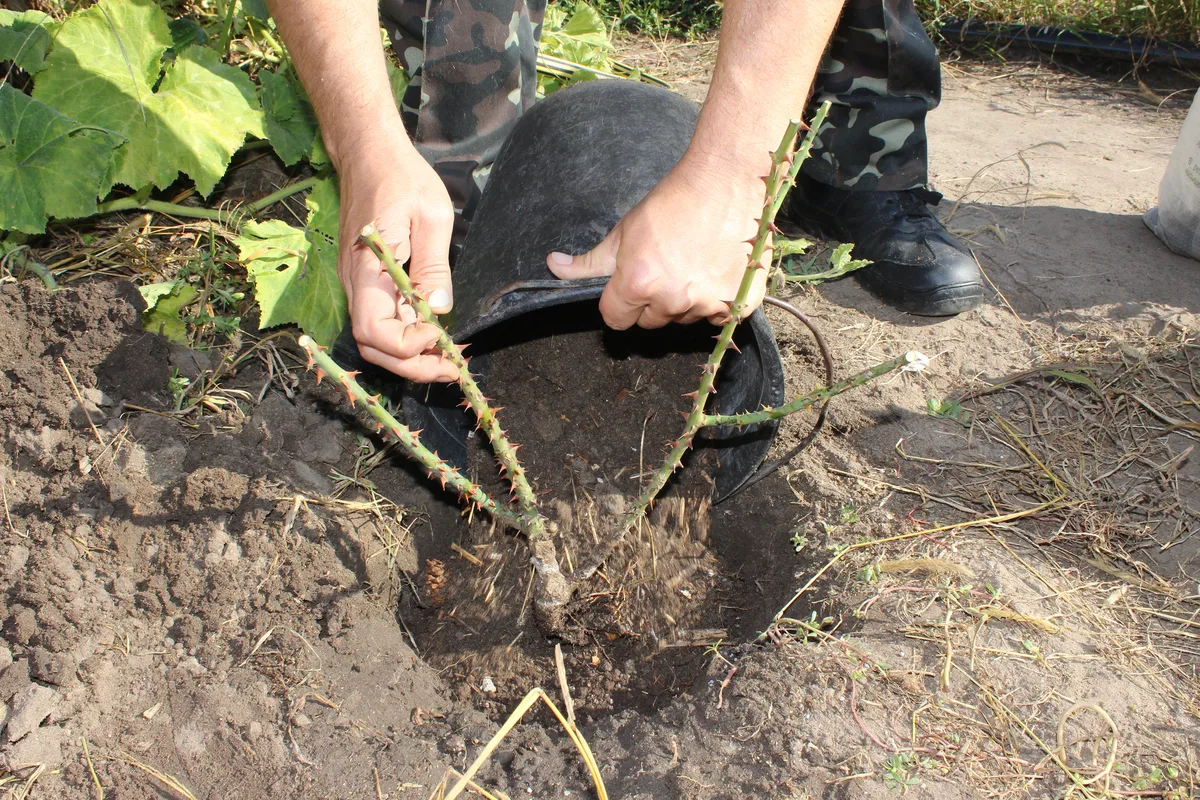
Foliar Spray
Commercial organic foliar sprays or homemade compost tea can stimulate healthy rose bush growth.
Alfalfa
Alfalfa meal or alfalfa pellets help to activate living soil, allowing plants to absorb more nitrogen and other nutrients.
Epsom Salt
Epsom salt contains magnesium, an important micronutrient for blooming roses.
Many rose gardeners mix Epsom salt into the planting hole, or into the top layer around their rose bushes.
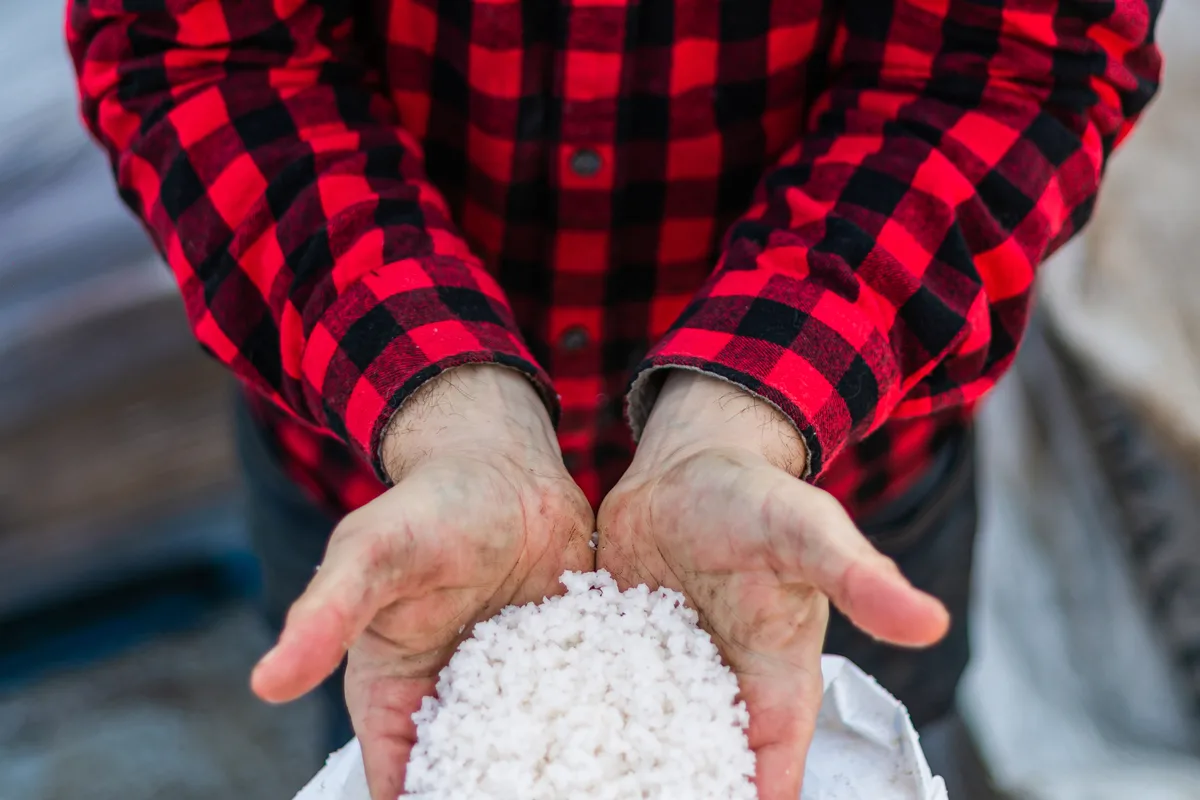
Eggshells
Pulverized eggshells are a natural slow-release fertilizer made up of minerals and nutrients, including rose-loving calcium.
For more on feeding your roses, take a look at How to Fertilize Roses.
Secret #5: Pruning Roses
Timing
Roses that bloom on old wood: Roses such as climbers or heirlooms bloom on old wood only. These roses have one plentiful bloom season, usually in midspring. Prune these rose types soon after their bloom time is complete. This will keep the rose bushes tidy while giving the plant time to make strong growth for next year’s flower show.
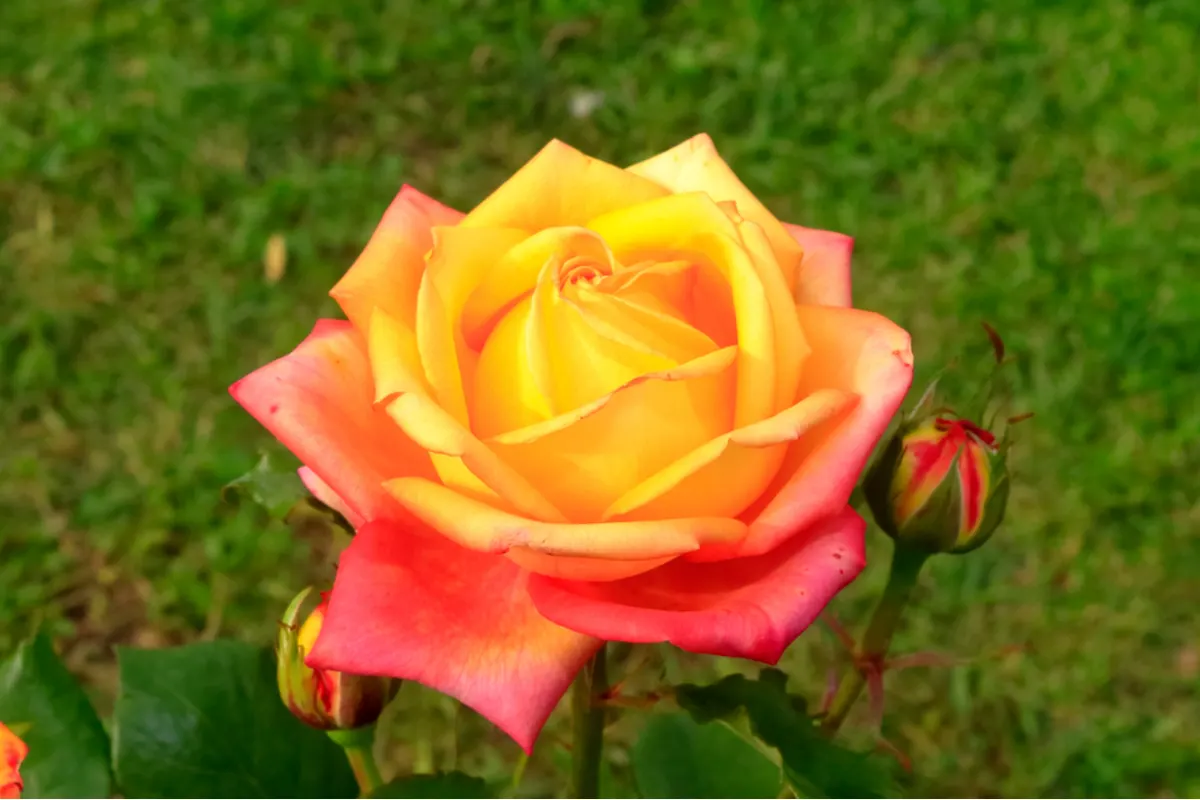
Roses that bloom on new wood: Maximize reblooming roses by firstly, pruning in late winter to early spring. Next, dedicatedly deadhead reblooming roses to encourage ongoing blossoms.
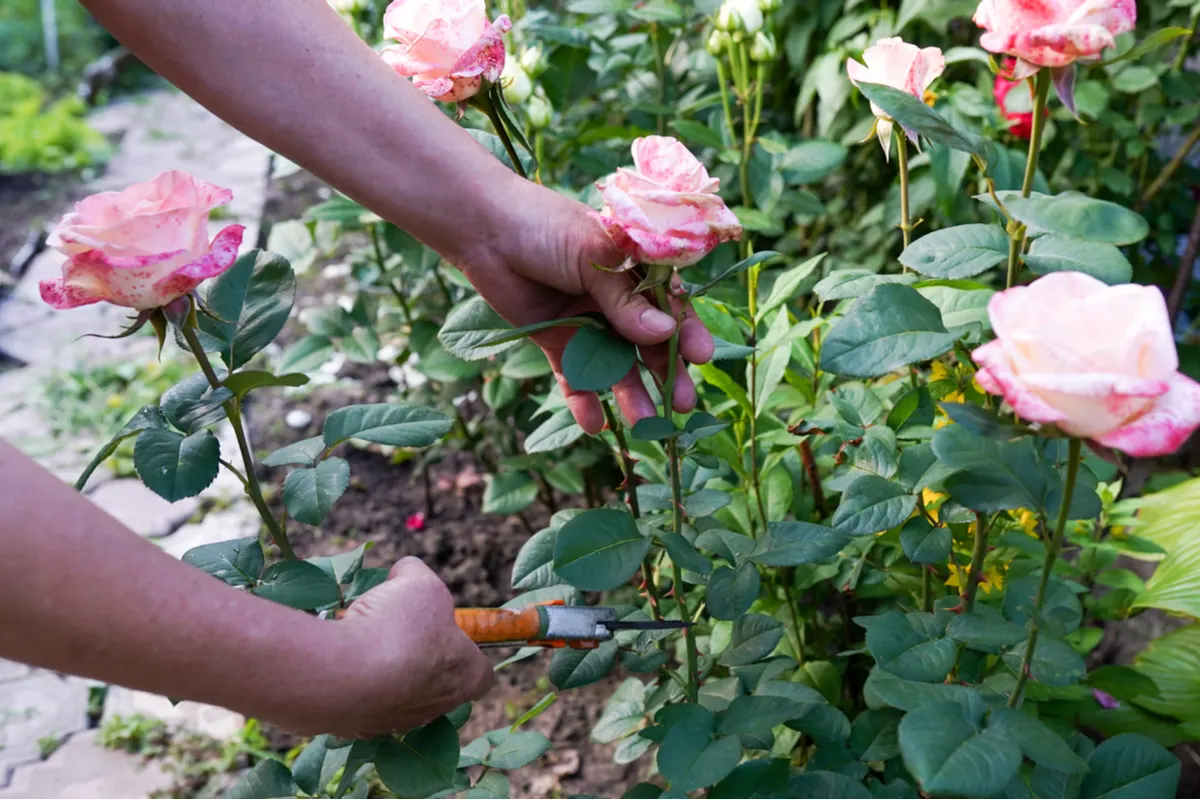
Cleanliness
To avoid spreading diseases among your roses, firstly, always keep all pruning implements clean.
Secondly, if cutting diseased branches, sterilize pruning implements with rubbing alcohol or equivalent between cuts.
Lastly, avoid composting diseased rose branches, as they may harbor soil-borne rose diseases.
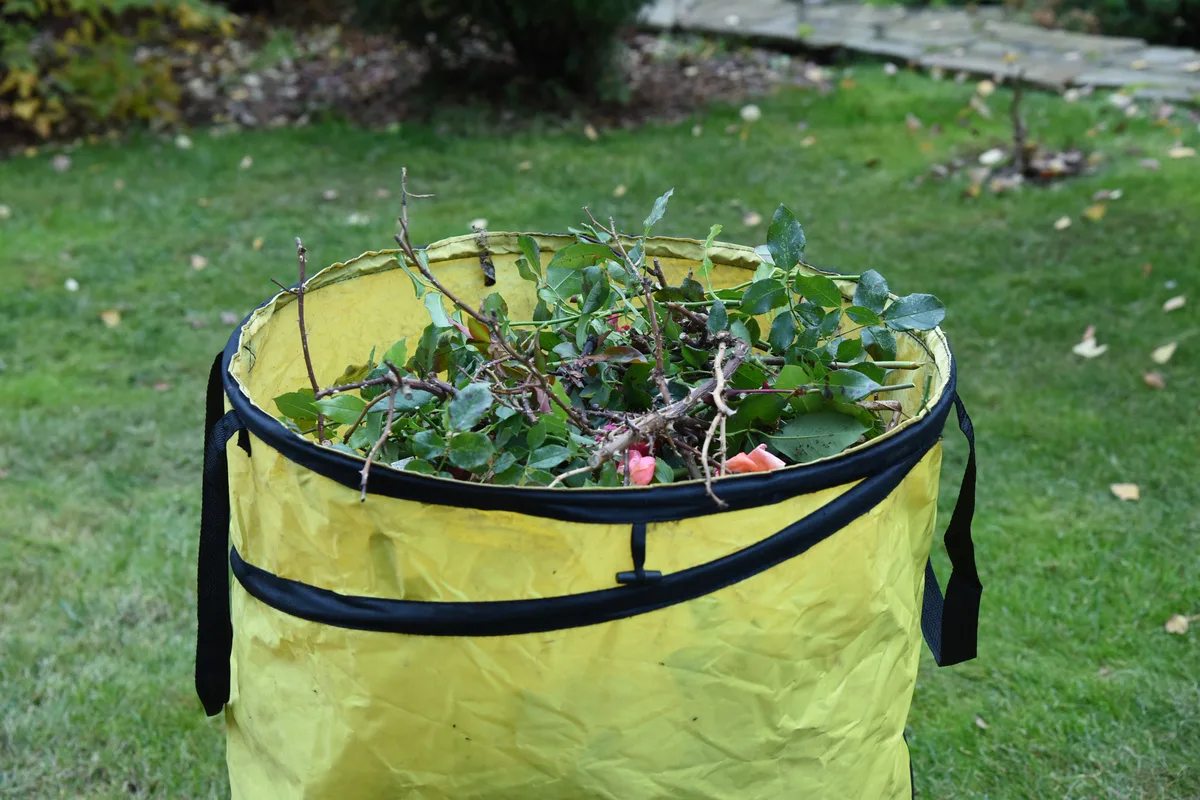
Where to Prune?
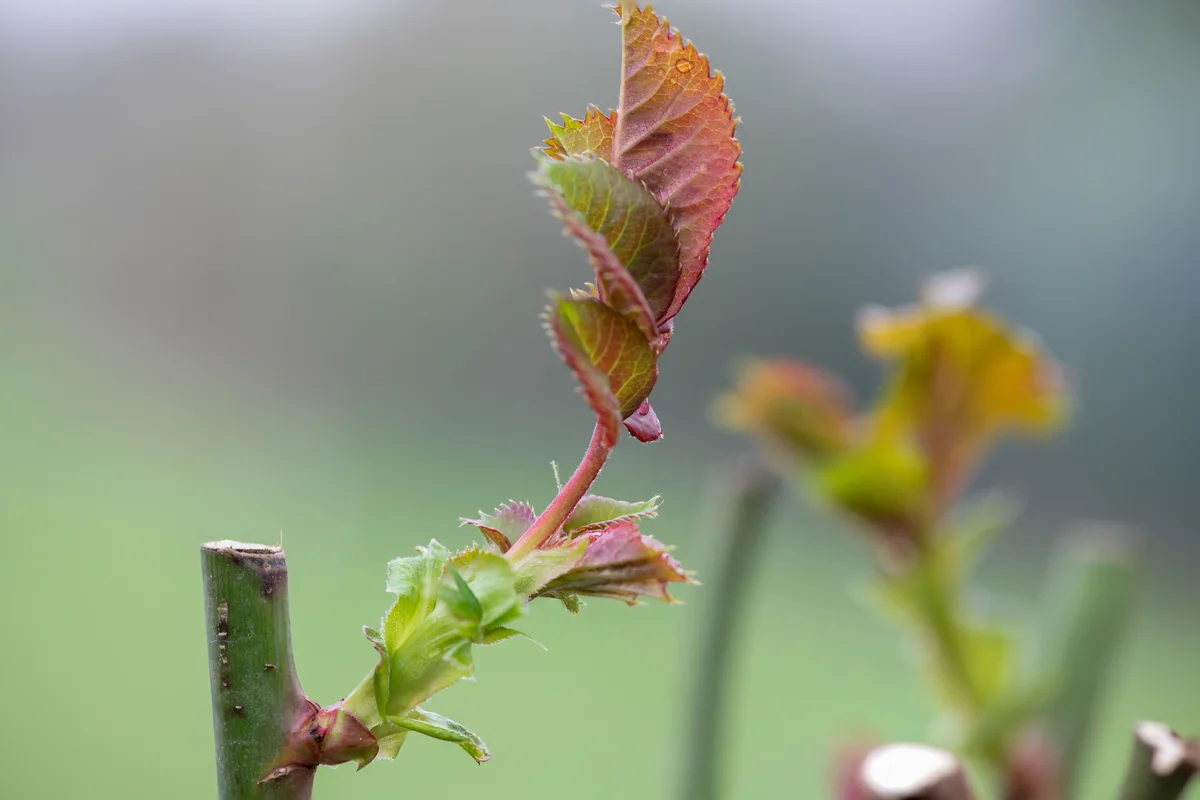
To keep your rose bushes open to flower-forming sunlight, place your cuts less than an inch above an outward-facing bud eye.
Deadheading: The Rule of 5.
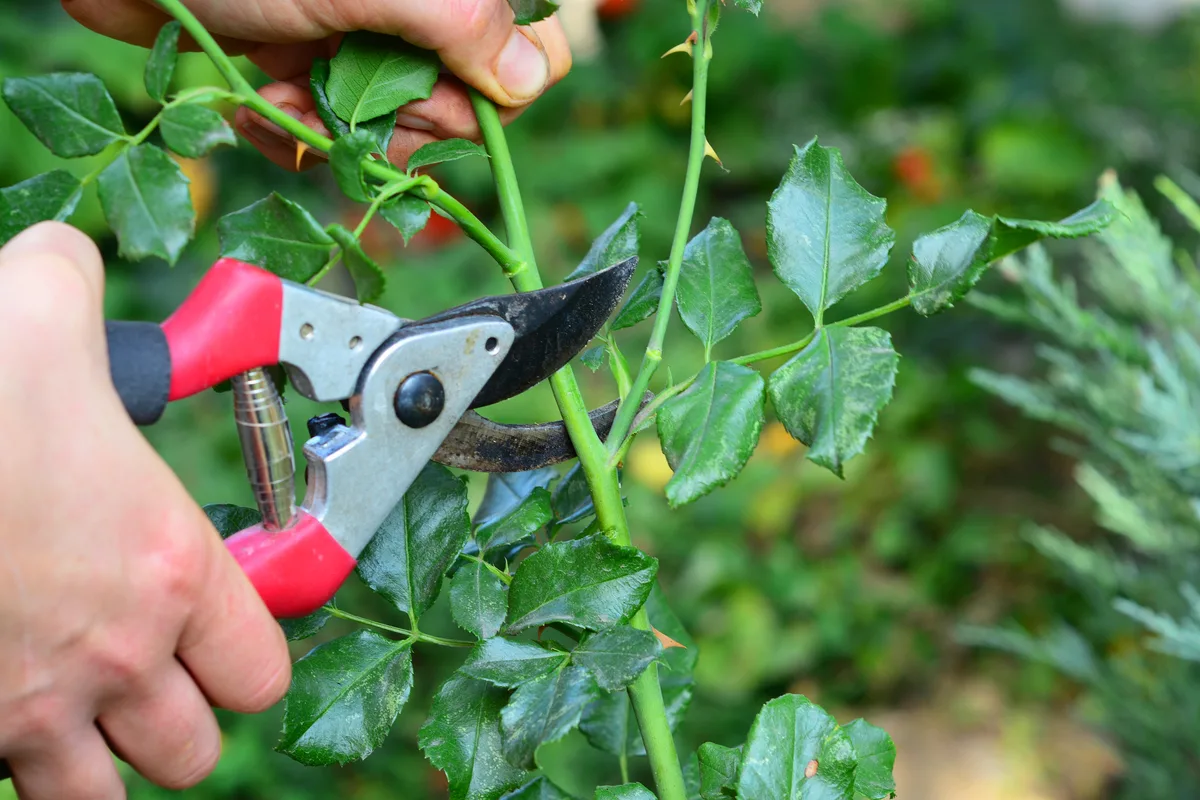
Whether pruning or deadheading, always place your cuts above leaves with 5 or more leaflets. This encourages growth from strong, mature rose branches. Weak or young branches will have leaves of only 3 leaflets, and subsequent growth won’t bloom as bountifully.
Secret #6: Prevent Pests and Disease
Nothing withers a rosebud before its full-blooming glory like insect pests or rose diseases.
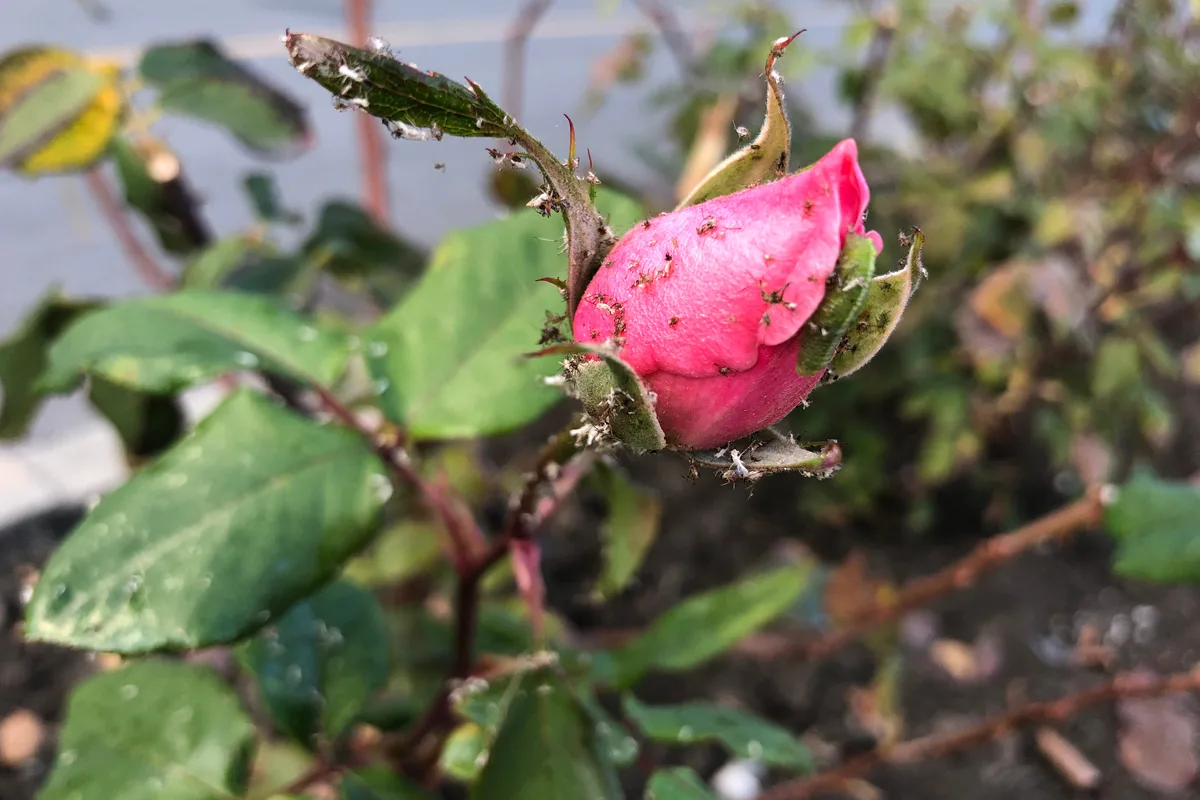
Choose pest- and disease-resistant varieties, especially if you know your area is prone to certain rose problems.
Mulching
Mulching provides nourishment, retains moisture, and, importantly, minimizes water splashing on leaves. This results in helping to prevent rose-prone diseases.
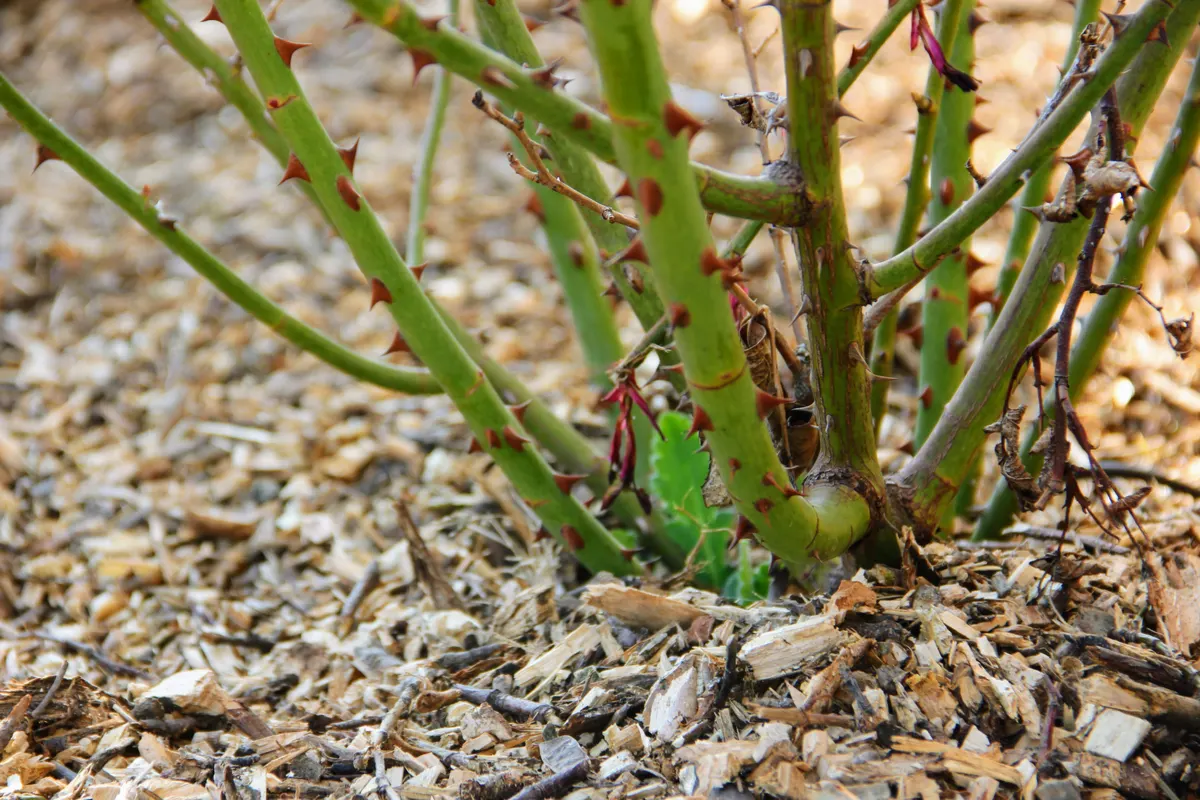
Companion Planting
In addition to looking spectacular, companion plants for roses can help fix nutrients in the soil that promote healthy, happy roses.
Moreover, companion plants can deter problem pests or attract beneficial insects that keep problem pests, such as aphids, at bay.
Plants that grow well with roses include: lavender, alyssum, foxgloves, shasta daisy, marigolds and more.
Maximize Your Roses Flower Power
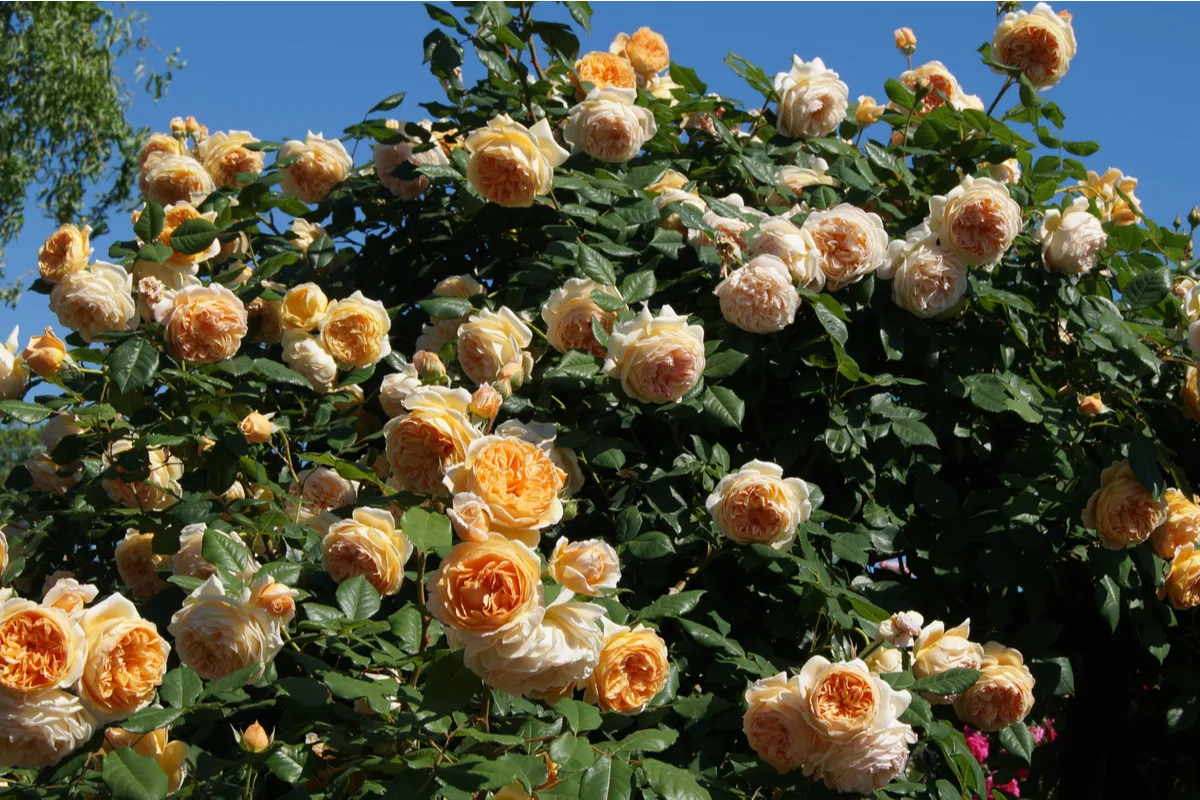
Keep your roses happy with these six secrets to get more blooms so you’ll have abundantly blossoming roses.
